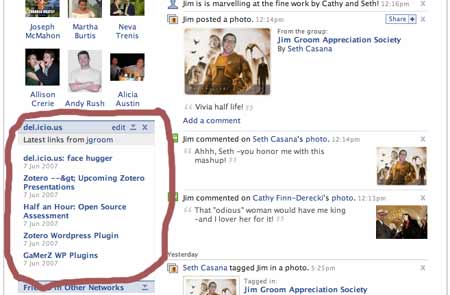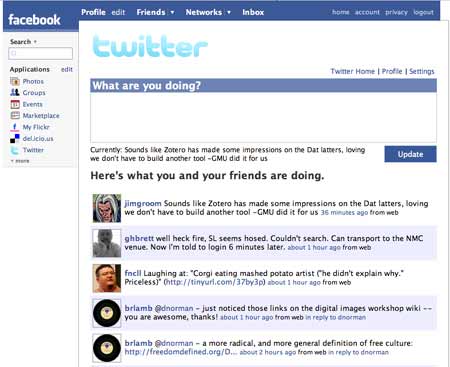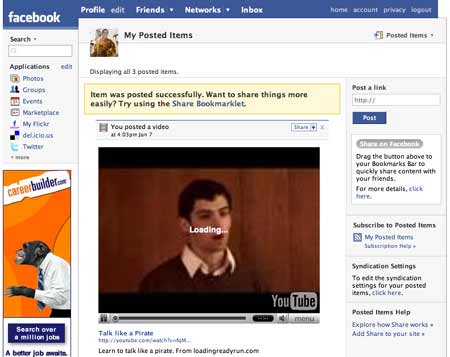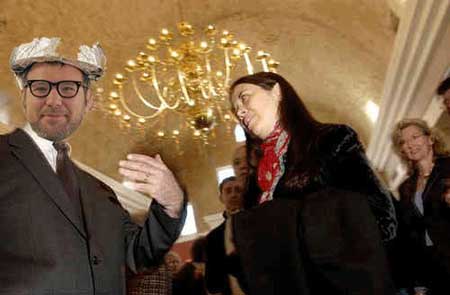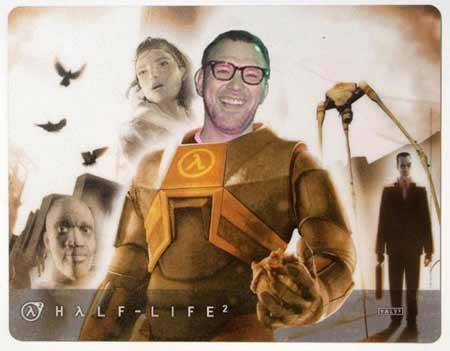 From another lifetime, here is class I taught at SUNY Old Westbury that was a total blast. A recent post on Film Noirs inspired me to start putting my old syllabi on bavawiki in order to begin archiving and making available some of the work I have done over the last ten years (has it been that long!). I’ll be blogging particular syllabus as I find them relevant, but one in particular that I couldn’t resist was an American Film Genres class I taught in the Summer of 2000. Primarily because it is so far out there. I have all sorts of deep seated issues with adjuncting at a University that I may get into in more detail in later posts, but one of the few benefits (and it is a huge one in my opinion) is the ability to experiment with subject matter, approaches, and arguments for a class you are teaching (with the understanding that every syllabus is in fact an argument). This particular class used the text Refiguring American Film Genres to approach the ways in which genres are much dynamically formed, re-shaped, and re-imagined over time. Below is the course description:
From another lifetime, here is class I taught at SUNY Old Westbury that was a total blast. A recent post on Film Noirs inspired me to start putting my old syllabi on bavawiki in order to begin archiving and making available some of the work I have done over the last ten years (has it been that long!). I’ll be blogging particular syllabus as I find them relevant, but one in particular that I couldn’t resist was an American Film Genres class I taught in the Summer of 2000. Primarily because it is so far out there. I have all sorts of deep seated issues with adjuncting at a University that I may get into in more detail in later posts, but one of the few benefits (and it is a huge one in my opinion) is the ability to experiment with subject matter, approaches, and arguments for a class you are teaching (with the understanding that every syllabus is in fact an argument). This particular class used the text Refiguring American Film Genres to approach the ways in which genres are much dynamically formed, re-shaped, and re-imagined over time. Below is the course description:
This course will examine a number of films through the classification tool of genre. Genre, in its traditional sense, designates a kind or type of film that can easily be delimited with such common labels as melodrama, horror, science fiction, musical, romance, etc. This understanding of the term genre immediately exemplifies its usefulness for categorizing films into specific groups, potentially satisfying particular viewer’s expectations. Such overarching film genres, such as those listed above, are often thought in terms of static, unchanging conventional forms that continually apply a particular formula for a familiar result. Such an understanding of film genres does little to suggest how and why these groups are formed, and what might account for a particular genre’s success in a particular historical moment. This class will look at four relatively distinct genres of American film (The World War II film, Film Noir, Blaxploitation, and Horror) in order to understand how film genres come about. This exploration will hopefully lead to questions about the role of genre films in marketing, selling, sustaining, and reinvigorating particular “kinds or types†of films. Genre is first and foremost a classifying structure, yet we will try and examine how this seemingly static structure depends upon rupture and deviation in order to keep film genres in circulation for any prolonged period of time. Finally, we will attempt to suggest how newer cycles of films (Slasher films, B-movies, Cult films, the Woman’s film, etc.) might use a different criteria to decide what constitutes a genre film, hence casting doubt on any entirely stable, universal definition of generic formations.
The class obviously is framing an argument, one which I believe opens up alternative ways to approach how we read film as a series of relations that tell us as much about the ways in which we categorize and understand films as it does about a particular moment in which these relations emerge. One quick anecdote in relationship to this particular class. Through week two the class was going pretty well, I had them on the ropes with the WWII and Noir films, once we got to Blaxploitation, more specifically the opening scene of Sweet Sweetback’s Baadasssss Song, an uproarious protest in the class amongst a few students broke out. In particular, some older, retired folks who were auditing this class were visibly shaken by the scenes of a young black man being introduced to the world of sexuality so vividly. When we had our discussion they were pretty vocal about the explicit nature of the film, and when they spoke with Mikhail Gershovich, a friend, benefactor (he got me this formative gig), and fellow professor at Old Westbury, one student remarked to him the following paraphrase: “The class was going well until that ‘Sweetback Sweet Ass’ came on the screen.” Experimentation has its casualties! The class was a lot of fun and generative (or at least I think so given the papers I received) for many of the students primarily because of these risks. How often are students asked to thinking critically about all the movies that are thrown their way on a regular basis?
Section 1: World War II Combat Films
 Required outside viewing: Saving Private Ryan (1998) and Thin Red Line (1998). Recommended outside viewing: The Big Red One (1980), Guadacanal Diary (1943), The Story of GI Joe (1944), 1941 (1979), and Why We Fight (Documentary Series 1942-1945), Triumph of the Will (1935), and The Olympia (1938).
Required outside viewing: Saving Private Ryan (1998) and Thin Red Line (1998). Recommended outside viewing: The Big Red One (1980), Guadacanal Diary (1943), The Story of GI Joe (1944), 1941 (1979), and Why We Fight (Documentary Series 1942-1945), Triumph of the Will (1935), and The Olympia (1938).
* Tue, May 30th – Class Introduction (read Rick Altaman’s “Reusable Packaging†in RAFG for 5/31)
* Wed, May 31st — Wake Island
* Thu, June 1st – Bataan (read Thomas Schatz “World War II and The Hollywood War Film†in RAFG for 6/5)
* Mon, June 5th – They Were Expendable
* Tue, June 6th – Paths of Glory (I know this is a WWI movie, but I had to work it in!)
* Wed, June 7th – Class discussion AV
Section 2: Film Noir
 Required outside viewing: Out of the Past, Chinatown, Body Double, Blue Velvet, and Devil in a Blue Dress. Recommended Outside Viewing: The Third Man, Touch of Evil, The Lady from Shanghai, Pick-up on South Street, Double Indemnity, Key Largo, Casablanca and One False Move.
Required outside viewing: Out of the Past, Chinatown, Body Double, Blue Velvet, and Devil in a Blue Dress. Recommended Outside Viewing: The Third Man, Touch of Evil, The Lady from Shanghai, Pick-up on South Street, Double Indemnity, Key Largo, Casablanca and One False Move.
* Thu, June 8th – Shadow of a Doubt (read Vivian Sobchack’s “Lounge Time: Post-war Crises and the Chronotope of Film Noir†in RAFG)
* Mon, June 11th – The Killers
* Tue, June 12th – Mildred Pierce
* Wed, June 13th –The Postman Always Rings Twice
Section 3: Blaxploitation
 Required Outside Viewing: Shaft (2000) [if possible], Dirty Harry, I’m Gonna Git You Sucka, Foxy Brown, and Jackie Browne. Recommended Outside Viewing: Foxy Brown, Black Caesar, Shaft in Africa, Car Wash, Buck and the Preacher, Cleopatra Jones, Superfly, Shaft’s Big Score, Coffy, Friday Foster, and Slaughter.
Required Outside Viewing: Shaft (2000) [if possible], Dirty Harry, I’m Gonna Git You Sucka, Foxy Brown, and Jackie Browne. Recommended Outside Viewing: Foxy Brown, Black Caesar, Shaft in Africa, Car Wash, Buck and the Preacher, Cleopatra Jones, Superfly, Shaft’s Big Score, Coffy, Friday Foster, and Slaughter.
* Mon, June 18th – Sweet Sweetback’s Badassss Song (read George Lipsitz’s “Genre Anxiety and Racial Representation†in RAFG)
* Tue, June 19th – Blacula
* Wed, June 20th – Shaft (1971 version)
* Thu, June 21st – Dolemite
Section 4: Recent Horror Cycles
 Required Outside Viewing: Night of the Living Dead, Dawn of the Dead, Texas Chainsaw Massacre, and Stepfather. Recommended Outside Viewing: Psycho, Dressed to Kill, Friday the 13th, The Birds, Day of the Dead, Creepshow, The Exorcist, Child’s Play, Silence of the Lambs, and Henry: Portrait of a Serial Killer, Wes Craven’s New Nightmare, and Scream (I&II).
Required Outside Viewing: Night of the Living Dead, Dawn of the Dead, Texas Chainsaw Massacre, and Stepfather. Recommended Outside Viewing: Psycho, Dressed to Kill, Friday the 13th, The Birds, Day of the Dead, Creepshow, The Exorcist, Child’s Play, Silence of the Lambs, and Henry: Portrait of a Serial Killer, Wes Craven’s New Nightmare, and Scream (I&II).
* Mon, June 25th — Martin (Read David J. Russell’s “Monster Roundup†in RAFG for 6/26) ML
* Tue, June 26th – Halloween
* Wed, June 27th – Evil Dead 2
* Thu, June 28th – Nightmare on Elm Street
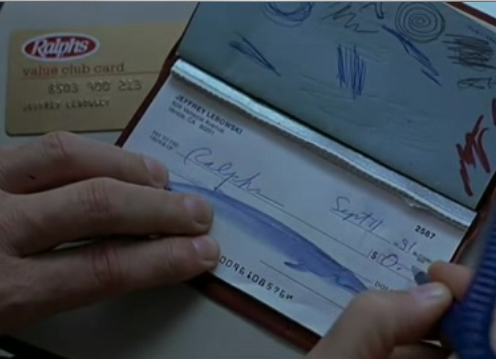

 If you are using the extremely powerful and flexible WordTube plugin for WordPress, consider updating to the latest version (1.44). bavatuesdays was hacked through a critical backdoor in the code of version 1.33 which caused a little bit of concern for the humble proprietor. That being said, I’d like to thank Alex Rabe for fixing this issue so quickly, kick myself for not knowing about this fix sooner, and praise Elliot Kendall from Brandeis University, who drew my attention to the fact that bavatuesdays was spawning hellfire in the form of malicious code.
If you are using the extremely powerful and flexible WordTube plugin for WordPress, consider updating to the latest version (1.44). bavatuesdays was hacked through a critical backdoor in the code of version 1.33 which caused a little bit of concern for the humble proprietor. That being said, I’d like to thank Alex Rabe for fixing this issue so quickly, kick myself for not knowing about this fix sooner, and praise Elliot Kendall from Brandeis University, who drew my attention to the fact that bavatuesdays was spawning hellfire in the form of malicious code.  From another lifetime, here is class I taught at SUNY Old Westbury that was a total blast. A recent
From another lifetime, here is class I taught at SUNY Old Westbury that was a total blast. A recent  Required outside viewing: Saving Private Ryan (1998) and Thin Red Line (1998). Recommended outside viewing: The Big Red One (1980), Guadacanal Diary (1943), The Story of GI Joe (1944), 1941 (1979), and Why We Fight (Documentary Series 1942-1945), Triumph of the Will (1935), and The Olympia (1938).
Required outside viewing: Saving Private Ryan (1998) and Thin Red Line (1998). Recommended outside viewing: The Big Red One (1980), Guadacanal Diary (1943), The Story of GI Joe (1944), 1941 (1979), and Why We Fight (Documentary Series 1942-1945), Triumph of the Will (1935), and The Olympia (1938). Required outside viewing: Out of the Past, Chinatown, Body Double, Blue Velvet, and Devil in a Blue Dress. Recommended Outside Viewing: The Third Man, Touch of Evil, The Lady from Shanghai, Pick-up on South Street, Double Indemnity, Key Largo, Casablanca and One False Move.
Required outside viewing: Out of the Past, Chinatown, Body Double, Blue Velvet, and Devil in a Blue Dress. Recommended Outside Viewing: The Third Man, Touch of Evil, The Lady from Shanghai, Pick-up on South Street, Double Indemnity, Key Largo, Casablanca and One False Move. Required Outside Viewing: Shaft (2000) [if possible], Dirty Harry, I’m Gonna Git You Sucka, Foxy Brown, and Jackie Browne. Recommended Outside Viewing: Foxy Brown, Black Caesar, Shaft in Africa, Car Wash, Buck and the Preacher, Cleopatra Jones, Superfly, Shaft’s Big Score, Coffy, Friday Foster, and Slaughter.
Required Outside Viewing: Shaft (2000) [if possible], Dirty Harry, I’m Gonna Git You Sucka, Foxy Brown, and Jackie Browne. Recommended Outside Viewing: Foxy Brown, Black Caesar, Shaft in Africa, Car Wash, Buck and the Preacher, Cleopatra Jones, Superfly, Shaft’s Big Score, Coffy, Friday Foster, and Slaughter. Required Outside Viewing: Night of the Living Dead, Dawn of the Dead, Texas Chainsaw Massacre, and Stepfather. Recommended Outside Viewing: Psycho, Dressed to Kill, Friday the 13th, The Birds, Day of the Dead, Creepshow, The Exorcist, Child’s Play, Silence of the Lambs, and Henry: Portrait of a Serial Killer, Wes Craven’s New Nightmare, and Scream (I&II).
Required Outside Viewing: Night of the Living Dead, Dawn of the Dead, Texas Chainsaw Massacre, and Stepfather. Recommended Outside Viewing: Psycho, Dressed to Kill, Friday the 13th, The Birds, Day of the Dead, Creepshow, The Exorcist, Child’s Play, Silence of the Lambs, and Henry: Portrait of a Serial Killer, Wes Craven’s New Nightmare, and Scream (I&II).




